How To Use Off Camera Flash
The wink has go a vital piece of gear in many areas of photography. From portraits to products and art to manner, the flash gives yous the freedom to create powerful and punchy photos.
You're probably familiar with the traditional on-photographic camera flash. But what about the off-photographic camera wink?
In this post, I'll show you how to use and go a master of the off-camera flash.


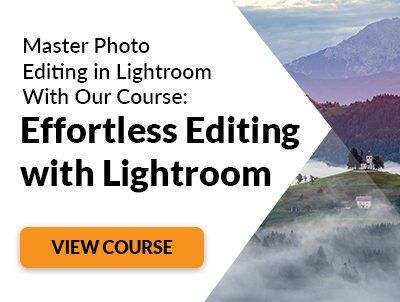
What is Off-Camera Flash?
Many modern cameras have wink built-in. When your taking you're shot, the flash will pop up and give a outburst of low-cal. If a camera doesn't take a wink built-in, there is the possibility to adhere one. Both of these options are on-photographic camera flashes.
An off-photographic camera flash is a flashbulb that is non attached to the camera. Yous tin move and position it completely independently.
It is synced to your photographic camera, so it will flash when the picture is taken. Simply the light can be moved separately from the camera itself.
An on-photographic camera flash is always going to illuminate your subject caput-on from the direction of the camera. But an off-camera flash gives yous more freedom with your flash photography.
The light can come from whatsoever management you choose. It can be to the side or even backside your subject area. It doesn't have to be pointed at the subject field at all.
An off-photographic camera flash allows you lot to use different kinds of lighting equipment. For example, yous tin can play with umbrellas, softboxes, and beauty dishes.
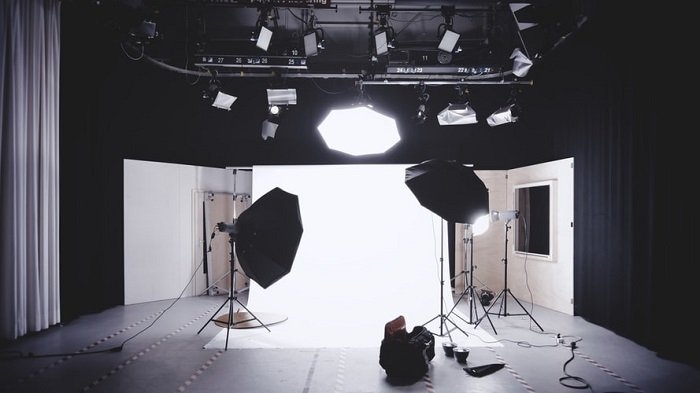
Why You Should Employ an Off-Camera Flash
The premise of a wink is simple. Information technology gives you more light when at that place isn't enough natural calorie-free to expose your prototype. Information technology means yous don't accept to use a slower shutter speed.
Only the flash power of an on-camera unit can ofttimes be too harsh. A wink off-camera gives you more flexibility. Y'all take more than creative control.
You tin can illuminate your subject without blinding them. As the flash can be positioned anywhere you like, you can create unlike lighting tones. It'southward easier to control how much light you use in the photos.
With off-camera flash photography, you lot tin emphasise depth. An on-camera flash will flatten our image by removing all shadows. Past moving the light source, yous can control shadows. You have the ability to create or overstate shadows in unlike areas of your epitome.
And they're not simply limited to the studio. Many manner and portrait photographers employ off-photographic camera wink photography when they're shooting on location.
In many indoor settings, the ambient low-cal isn't enough. If the camera settings can get the desired effect, then an off-photographic camera flash is perfect for getting the shot you want.
You lot might not think that you'll need a flash when you're outside. Merely there are yet many ways to utilize flash photography, fifty-fifty in bright sunlight.
You can utilize the flash to add light to dark areas. Or to even out the light from the sun. In add-on, you can use off-photographic camera flash techniques to highlight or obscure sections of your images.

Equipment You'll Need to Buy
Flash Unit of measurement
When you're looking to buy an off-photographic camera flash unit of measurement, make sure information technology is compatible with your photographic camera.
If you use Nikon or Canon, selecting a flash is piece of cake plenty. Both brands make their own flashguns. And so if you match the camera and flash brands, you won't take to worry about compatibility.
For other brands, you will have to take more care. Y'all need to know the wink you desire is compatible with the exact camera model you lot have.
one. PC Sync Cable
A PC sync cablevision is the cheapest option for syncing the flash to your camera. The PC sync cable connects your camera to your wink unit directly.
Virtually professional person-level DSLR cameras accept a PC cable port. But some cheaper options don't. Nor exercise some newer mirrorless camera models.
If your camera doesn't have a PC port, don't worry. You tin buy a hot shoe adaptor that connects to the top of your photographic camera. These are cheap and easy to find.
The master problem with the PC Sync cable is the fact that information technology's a cable. It limits the reach of the flash. And it tin cause accidents. The communication between the camera and the flash is likewise limited.
ii. Off-Photographic camera Shoe Cable
The shoe cable is like to the PC sync cable. Only this cable attaches to the camera's hot shoe connection.
This connection blazon is more versatile as near DSLR and mirrorless cameras have a hot shoe.
Another do good over the PC cablevision is that more than data can be passed from the camera to the flash unit. It allows you to use different flash modes for varied lighting effects.
The shoe cable has the aforementioned master event as using a PC sync. That is the cable itself. It can get in your style. And it limits your options.
3. Infrared Transmitter
I notice the infrared transmitter the easiest and nigh reliable flash connexion. And it's the one I currently apply for flash photography.
The performance is similar to the cablevision options above, but this transmitter functions wirelessly. As a consequence, information technology gives you a lot more room to manoeuvre.
You tin can move your flash further from the photographic camera. But the transmitters demand to be able to "run across" each other. That means nothing solid can exist betwixt the camera and the flash unit.
Many manufacturers now produce cameras and flashes with IR sensors built in. This is useful and a handy saving. If your machine is a bit older, y'all can still purchase the transmitters separately.
iv. Radio Transceiver
The radio transceiver is condign the most popular flash connectedness for professional person photographers. It'southward piece of cake to set up and reliable over long distances. And having no cables gives you a lot of creative freedom.
Many photographers favour radio triggers over infrared because the 2 units don't demand to "see" each other. This gives you complete control over the off-camera wink setup.
Many brands offering great radio transceiver gear. But my top pick has to exist the Pocket Sorcerer. It'southward reliable and like shooting fish in a barrel to employ.
5. Slave Trigger
An optical slave trigger isn't an off-photographic camera flash unit of measurement you can connect directly to the camera. Instead, it reacts to flashes of light and sets off another right away.
A slave trigger is only useful when you need two flashes for one shot. Another flash triggers information technology, and so information technology's not the original source of light.
The response time can also be a problem. The flash from the trigger will always exist a fraction behind the original. So it can be tricky to get the sync speed just right.
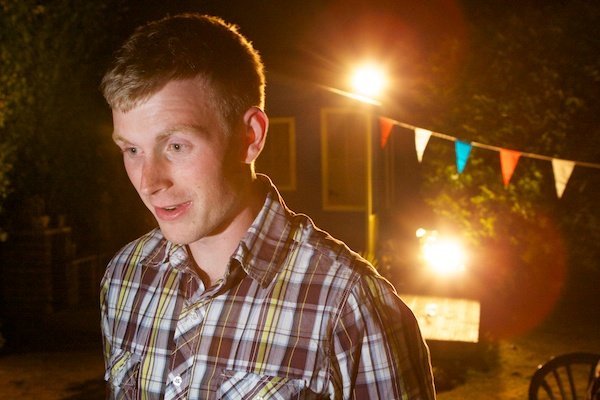
How to Use an Off-Camera Flash
Once you lot have your gear, yous can experiment with some off-camera lighting techniques. It could accept some practice to master it, but I tin can help you go started.
Here are a few ways to use an off-camera flash to improve your photography.
i. Employ Your Wink to Fill Light
You tin can read the full post on Fill Flash lighting here. But I'll go through information technology hither for you too.
The basic concept is to fill up areas of your scene where low-cal is blocked or faded. The dark spots could exist caused by something blocking the primary light source. More possibly in that location isn't enough ambient light.
In my photo below, the sun was a stiff light source at the back of the shot. I didn't want the model'southward back to exist underexposed, so I used a flash to fill in the light on the nearly side.
The dominicus to the rear is the main source of low-cal. And now, with the flash off-camera to the left as the fill up light, the subject is evenly exposed.

two. Recreate Ambient Lighting Indoors
You can ready i or two off-camera flashes and betoken them at the ceiling above your subject. This is a smashing trick when you're shooting indoors.
The aim is to fill up the room with light that looks ambient and natural. It's best to utilize light diffusers or softboxes with this technique. The flash ability of a bare bulb is besides harsh.
For the photo below, I ready a diffused flash on either side of the models. Information technology produced a soft lighting event that reduced shadows. And there's no obvious utilize of wink. Instead, it looks similar natural and ambience light.

3. Disguise Your Flash to Make the Lighting Look Natural
Sometimes you need to illuminate your subject, but yous don't want the viewer to recognise that a flash has been used.
To gainsay this, I like to place the flash somewhere that makes the light seem natural. I want the calorie-free to await like ambient lite from the scene.
This is the technique I used in the photo below. I wanted the angle of the light to compliment the angle of my field of study's caput. So I positioned the wink to the summit-left of the shot. And it gives the impression of an external house light rather than a camera flash.

4. Use Obvious Flash Separation to Capture Dramatic Lighting
I don't ever want to hide the fact I've used a wink. Sometimes, I desire to harness the full effect of the flash output. I want the viewer to know that I've used a wink.
The flash tin be used to make your subjects popular out from their surround, as is the case with my photo below.
I've used the flash to make my subject stand out. A head-on flash would take been likewise directly. Past placing the wink in the lesser-left, the darkness in the superlative right is emphasised. It keeps the groundwork obscured and brings my subject out of the darkness.
These are the things yous need to think about when working with flash photography. What practise you want your viewer to see? And where do you want them to look?
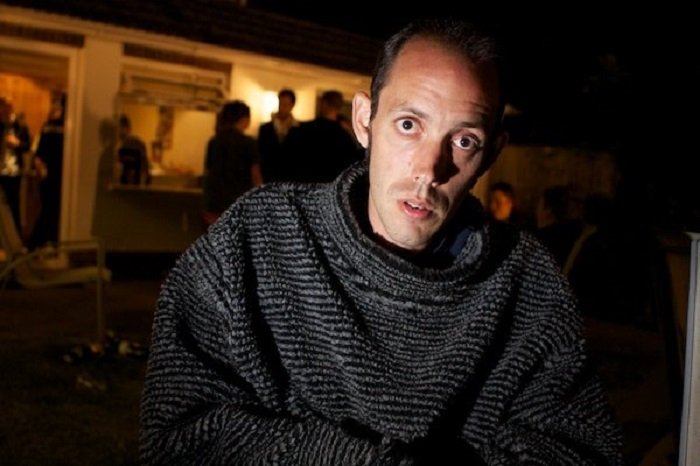
five. Try Using the Off-Camera Flash equally Set Lighting
The flash isn't ever used to light upwards your subject area. If my model is already well-lit, I use the wink on other parts of the scene.
In the photograph below, I positioned the flash in front of the two stones at the bottom of the frame (the model was holding the flash with her feet).
By positioning the flash in this way, I was able to lift the bottom of the frame. And the two stone pillars created a natural corridor for the light, illuminating her face up.
Having the flash focus on the rocks also creates a contrast between the hard rocks and the soft skin of the model.
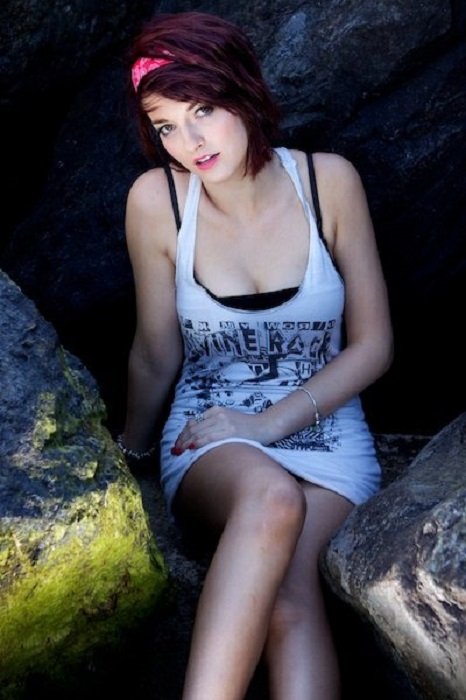
vi. Avoid Unintentional Shadows From an Off-Camera Flash
The principal thing you need to lookout out for when using an off-camera flash is the shadows.
This is less of a problem when using a wink that'southward attached to your camera. The calorie-free is always head-on, so the shadows will exist backside your bailiwick.
Simply when you're using an off-camera unit, you need to exist aware of the shadows the wink volition create.
One mutual instance is the nose of a human field of study. If you have your flash positioned to their left, their olfactory organ volition bandage a long shadow on the opposite side of their face up.
Sometimes this volition be the effect yous desire. But if non, it'due south something you have to recollect virtually when using flash lighting.

Conclusion
Mastering the technique of off-camera flash photography is a corking manner to take your work to another level. You only demand a few actress pieces of equipment. And you can solve many lighting issues in the studio or on location.
No thing your photography style, an off-camera flash tin can be a real do good to your images. So if you're into portraits or manner photography, you can exit and practice today.
I hope this article has helped you understand off-photographic camera flash photography.
Gear up to use the off-camera flash technique? Bank check out our Dreamy Childhood Portraits eBook.
Source: https://expertphotography.com/how-to-use-an-off-camera-flash/
Posted by: underwoodcolowerve.blogspot.com


0 Response to "How To Use Off Camera Flash"
Post a Comment